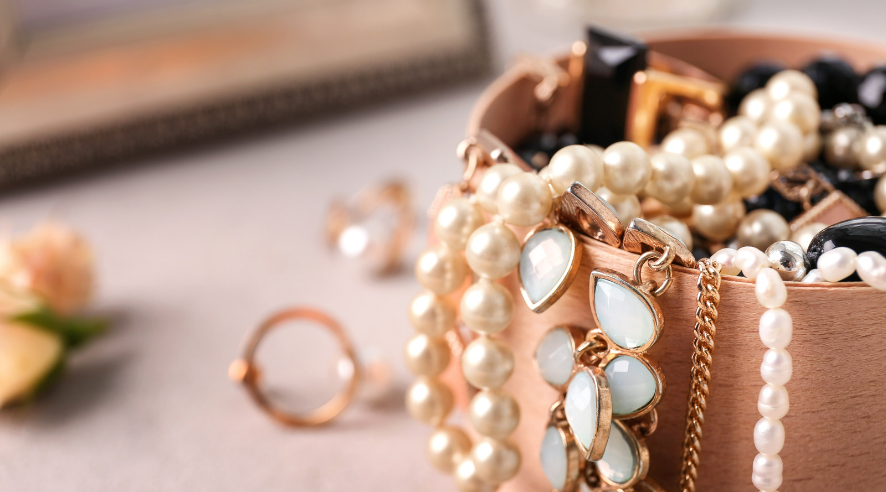The Timeless Beauty of Jewelry
- 19 January 2023

Jewelry has been a part of human civilization for thousands of years. From the ancient Egyptians to modern day fashion icons, jewelry has played a significant role in adorning and expressing one's individuality. The allure of jewelry lies not just in its aesthetic appeal but also in its cultural and historical significance. The different types of jewelry, materials, and styles have evolved over time, but the fascination for jewelry has remained unchanged. This article delves into the world of jewelry, its significance, history, and the current trends.
The Significance of Jewelry
Jewelry has always held a symbolic significance in human culture. In ancient civilizations, jewelry was used to denote wealth, social status, and power. Royalty and aristocracy adorned themselves with the most exquisite and extravagant jewelry to showcase their affluence. In some cultures, jewelry was also believed to have protective and healing properties. For instance, in ancient India, gemstones were believed to have curative powers and were worn to ward off evil spirits.
In modern times, jewelry still holds a special place in people's lives. It is an expression of personal style, emotions, and sentiments. Jewelry can be a symbol of love, commitment, and friendship. Engagement rings, wedding bands, and promise rings are some examples of the emotional significance of jewelry. Jewelry can also be a means of self-expression, reflecting one's personality and individuality.
The History of Jewelry
The history of jewelry can be traced back to ancient civilizations. The ancient Egyptians were known for their exquisite jewelry made of precious metals, gemstones, and glass. The Egyptians believed that jewelry had religious significance, and they adorned themselves with amulets and talismans to protect themselves from harm. The Greeks and Romans also had a rich tradition of jewelry-making, and their jewelry was adorned with intricate designs, symbols, and motifs.
During the Middle Ages, jewelry became more ornate and elaborate. Precious stones, pearls, and enamel were used to create intricate designs that reflected the opulence and luxury of the era. Renaissance jewelry was characterized by its elegance and sophistication, with designs inspired by nature and mythology.
The Industrial Revolution brought about a significant change in the world of jewelry. With the advent of machines, jewelry production became faster and more efficient. The Victorian era saw a resurgence of interest in jewelry, with designs inspired by the romanticism and sentimentality of the period.
The Current Trends in Jewelry
The world of jewelry has evolved significantly in recent times. While traditional styles and materials such as gold, diamonds, and pearls continue to be popular, there has been a growing interest in unconventional materials such as wood, leather, and ceramics. The rise of ethical and sustainable fashion has also led to a demand for eco-friendly and socially responsible jewelry.
The current trend in jewelry is all about personalization and customization. Consumers are seeking unique and personalized pieces that reflect their personality and individuality. Customized jewelry such as name necklaces, birthstone jewelry, and initial rings are becoming increasingly popular.
Statement jewelry is also a big trend, with oversized earrings, bold necklaces, and chunky bracelets making a statement. Layered necklaces, stackable rings, and mixing metals are also gaining popularity. Jewelry inspired by nature, such as floral motifs, animal shapes, and sea-inspired designs, are also in vogue.
The Future of Jewelry
The future of jewelry is exciting, with designers and brands experimenting with innovative materials and designs. Technology such as 3D printing and augmented reality is being used to create unique and customizable pieces.
Sustainability and ethical production will continue to be a priority in the future of jewelry. Brands are focusing on using recycled and sustainable materials, and ensuring ethical production practices. Consumers are becoming more conscious of the impact of their purchases and are seeking eco-friendly
Another key theme in jewelry is vintage and antique pieces. Vintage and antique jewelry are highly sought after for their uniqueness, rarity, and historical value. Vintage and antique jewelry pieces are often passed down as family heirlooms and have a sentimental value attached to them. They are also a sustainable option, as they do not contribute to the production of new jewelry.
In addition to vintage and antique pieces, there is a growing trend for upcycled jewelry. Upcycled jewelry refers to jewelry made from recycled or repurposed materials. This type of jewelry is eco-friendly and sustainable, as it reduces waste and the use of new materials. Upcycled jewelry can be made from a variety of materials such as bottle caps, plastic, paper, and old coins.
Another emerging trend in the world of jewelry is gender-neutral jewelry. Gender-neutral jewelry refers to pieces that are not specifically designed for men or women. This type of jewelry is inclusive and promotes gender equality. Gender-neutral jewelry is often minimalist and simple in design, with a focus on clean lines and geometric shapes.
Jewelry has also become a means of promoting social and political causes. Brands are creating jewelry with social and political messages to raise awareness and promote change. For instance, jewelry with feminist slogans, LGBTQ+ symbols, and environmental messages are gaining popularity.
In conclusion, jewelry is a timeless and fascinating aspect of human culture. The significance, history, and trends in jewelry have evolved over time, reflecting the changing tastes, values, and beliefs of society. The current trends in jewelry emphasize personalization, sustainability, and inclusivity. As technology and society continue to evolve, the future of jewelry is exciting and full of possibilities.




